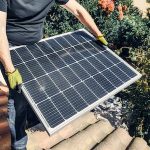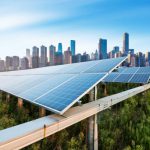Tired of Crazy Electricity Bills and Generator Wahala? Here’s the Easy Way Out.
You pay more for electricity, but the power supply is worse. Your generator drinks fuel like it’s water. And when there’s a blackout, you’re stuck sweating in the heat, waiting for power to return.
Sounds familiar? You’re not alone. Many Nigerians want to switch to solar but feel stuck—unsure where to start or worried it’s too expensive.
The truth? It’s easier than you think. In this guide, I’ll walk you through the process step by step, so you can escape the stress and start enjoying reliable, affordable power.
Step 1: Know Your Energy Needs
Before buying solar, understand how much power you use.
- Check your electricity bill for your average monthly consumption (in kWh).
- Track your generator usage if applicable.
- List essential appliances (fridge, TV, AC, laptops, etc.).
Example: If your business runs on 20 liters of diesel daily, you may need a 5-10 kWh solar system.Knowing your usage helps you avoid buying an oversized or weak system.
Step 2: Choose the Right Solar System
There are three types of solar setups:
- Grid-Tied (Best for urban areas) – Uses solar during the day and grid power at night. No batteries needed, making it cheaper.
- Off-Grid (Best for areas with no stable power) – 100% solar-powered with battery storage for nights. No reliance on the national grid.
- Hybrid (Best for unreliable power supply) – Solar panels + batteries + backup grid power. Ideal for businesses that need 24/7 electricity.
Example: If you’re in Lagos and want to cut bills, grid-tied solar works. If you live in a remote area with no power, off-grid is better.
Step 3: Get the Right Solar Components
A solar system has three main parts:
- Solar Panels – Convert sunlight to electricity.
Inverter – Converts solar energy into usable power.
Batteries (if needed) – Store extra power for nighttime use.
Choosing the Best Equipment:
- Panels: Monocrystalline is more efficient, polycrystalline is more affordable.
- Inverter Size: A 3kVA inverter is great for homes, while 10kVA+ suits businesses.
- Batteries: Lithium lasts longer than lead-acid.
Tip: Work with a trusted solar installer to avoid buying the wrong size system.
Step 4: Find a Trusted Solar Installer
Ask for recommendations from people who have solar.
- Check reviews and previous installations.
- Get quotes from 2-3 providers before deciding.
- Ensure they do a site inspection before installation.
Warning: Avoid anyone who rushes you into buying without assessing your needs.
Step 5: Budget & Payment Options
Solar is an investment, but it saves you money long-term. You don’t have to pay all at once.
Your options:
Outright Purchase – Pay once, enjoy free power for decades.
Solar Financing – Pay in installments over time.
Leasing – Some companies install for free, and you pay monthly.
Example: If your generator costs ₦100,000/month, financing a solar system at ₦50,000/month saves you money from day one.
Step 6: Install & Start Using Solar
Installation takes 1-3 days for homes and small businesses.
- Panels are mounted on your roof.
- Inverter and batteries are connected.
- System is tested and ready to use.
Your installer should also guide you on monitoring and maintenance.
Step 7: Maintain Your Solar System
Solar panels need minimal maintenance, but a few simple steps keep them efficient:
- Clean panels every few months to remove dust.
- Check battery health to ensure proper charging.
- Monitor performance using a tracking app (if available).
Tip: A well-maintained solar system lasts 25+ years, saving you millions.
Final Thoughts: Is Solar Worth It?
- Cuts electricity costs by 50-100%.
- No more fuel scarcity, noise, or generator repairs.
- Eco-friendly and increases property value.
Thinking about switching? Don’t wait until the next power outage. Talk to a trusted solar provider today





